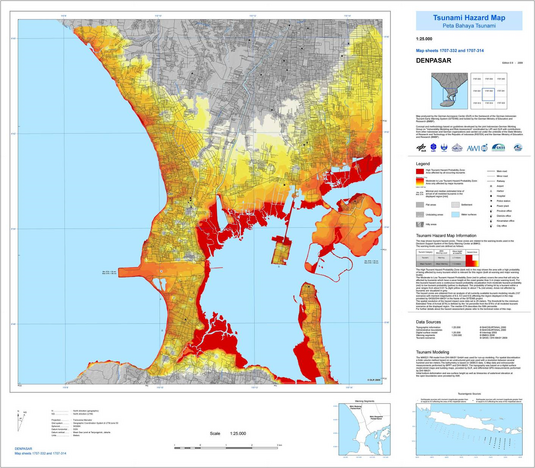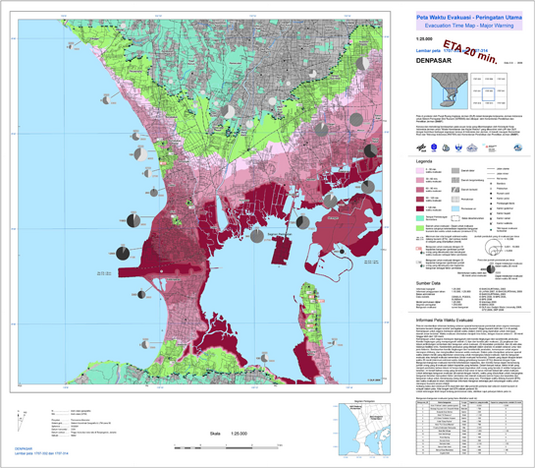The risk assessment deals with the spatial determination of the consequences of the tsunami impact on land. The risk analysis is based on two components; on the one hand the determination of the potentially endangered coastal regions and on the other hand, the estimation of the vulnerability of the people and the environment in the affected regions.
Based on the results of the modelling of tsunami wave propagation and inundation on land, the coastal regions affected by the tsunami wave are mapped. The results of the modelled scenarios of the tsunami generation and propagation provide the main basis for this.
This information is combined with the results of the vulnerability analyses. These analyses provide essential information, for whom and where high vulnerability due to tsunami disasters exists. To do this, aspects of socio-economic, environmental, physical and cultural domain must be taken into account. Detailed analyses were performed for pilot regions along the coastline and updated with an enhanced and updated tsunami scenario portfolio.
Two days after the official handover of the tsunami early warning system to Indonesia, on 31 March 2011, in an official ceremony in the Indonesian capital city, Jakarta, the results of the risk and vulnerability analyses, which were produced within the context of the GITEWS project (German Indonesian Tsunami Early Warning System) were handed over to the Indonesian Authority for Disaster Management (BNPB).
Since the beginning of the project in 2005, a joint working group for risk modelling and vulnerability assessment, which was coordinated by the Indonesian Institute of Sciences (LIPI) and the DLR, has been working on providing risk information for tsunami early warning and disaster prevention at the national and international level for three pilot projects. The aim of the working group was to produce tsunami risk maps, to develop a scientific proposal for a guideline on tsunami risk assessments in Indonesia and to integrate the results in the tsunami early warning system with the National Service for Meteorology, Climatology and Geophysics (BMKG).



